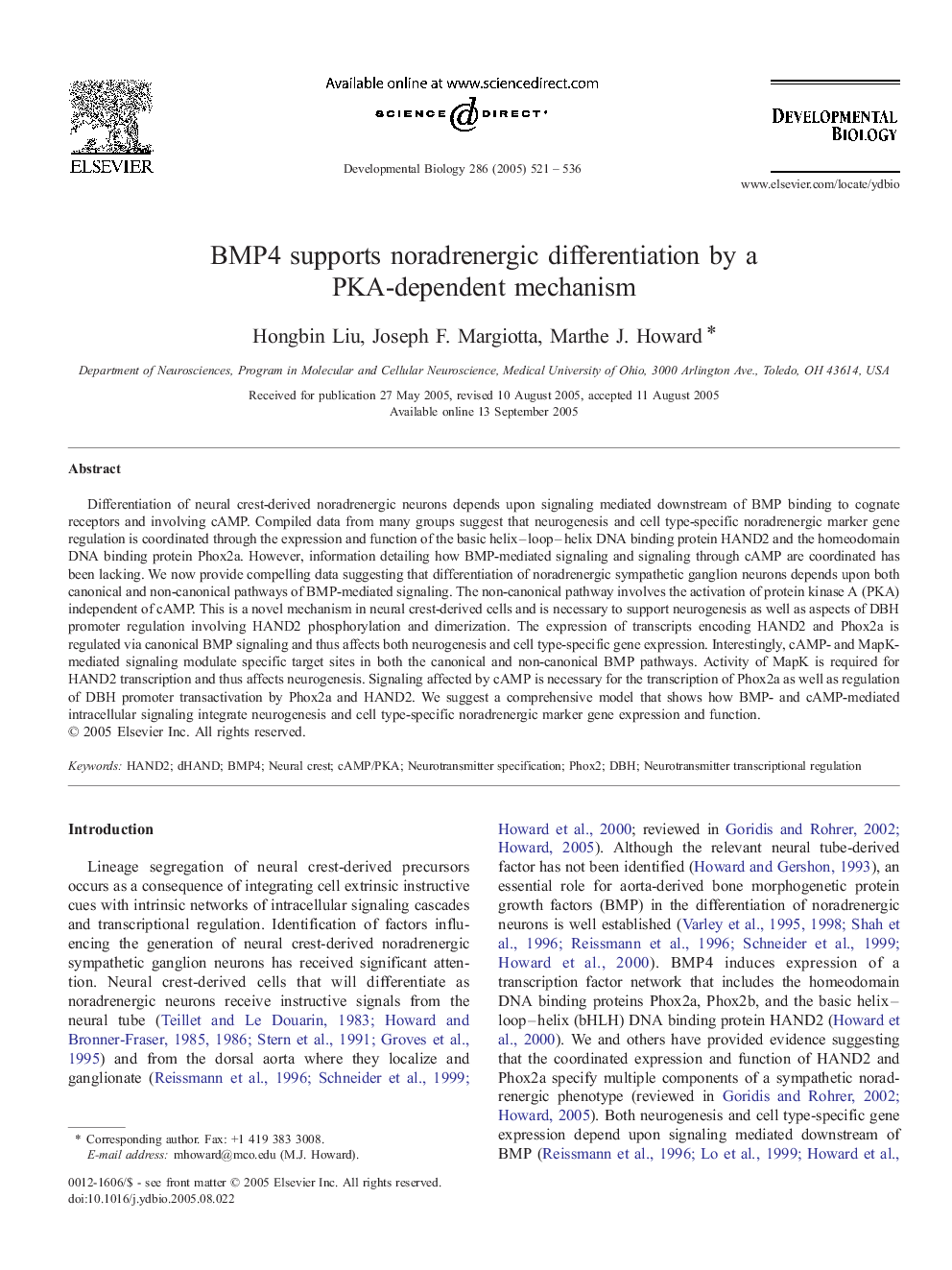| Article ID | Journal | Published Year | Pages | File Type |
|---|---|---|---|---|
| 10934078 | Developmental Biology | 2005 | 16 Pages |
Abstract
Differentiation of neural crest-derived noradrenergic neurons depends upon signaling mediated downstream of BMP binding to cognate receptors and involving cAMP. Compiled data from many groups suggest that neurogenesis and cell type-specific noradrenergic marker gene regulation is coordinated through the expression and function of the basic helix-loop-helix DNA binding protein HAND2 and the homeodomain DNA binding protein Phox2a. However, information detailing how BMP-mediated signaling and signaling through cAMP are coordinated has been lacking. We now provide compelling data suggesting that differentiation of noradrenergic sympathetic ganglion neurons depends upon both canonical and non-canonical pathways of BMP-mediated signaling. The non-canonical pathway involves the activation of protein kinase A (PKA) independent of cAMP. This is a novel mechanism in neural crest-derived cells and is necessary to support neurogenesis as well as aspects of DBH promoter regulation involving HAND2 phosphorylation and dimerization. The expression of transcripts encoding HAND2 and Phox2a is regulated via canonical BMP signaling and thus affects both neurogenesis and cell type-specific gene expression. Interestingly, cAMP- and MapK-mediated signaling modulate specific target sites in both the canonical and non-canonical BMP pathways. Activity of MapK is required for HAND2 transcription and thus affects neurogenesis. Signaling affected by cAMP is necessary for the transcription of Phox2a as well as regulation of DBH promoter transactivation by Phox2a and HAND2. We suggest a comprehensive model that shows how BMP- and cAMP-mediated intracellular signaling integrate neurogenesis and cell type-specific noradrenergic marker gene expression and function.
Related Topics
Life Sciences
Biochemistry, Genetics and Molecular Biology
Cell Biology
Authors
Hongbin Liu, Joseph F. Margiotta, Marthe J. Howard,
